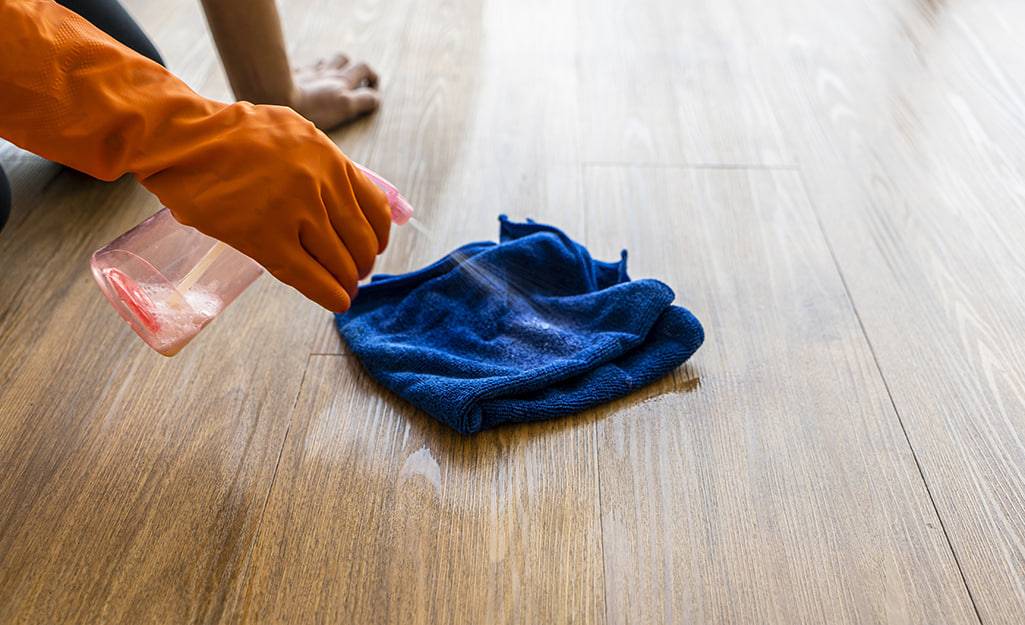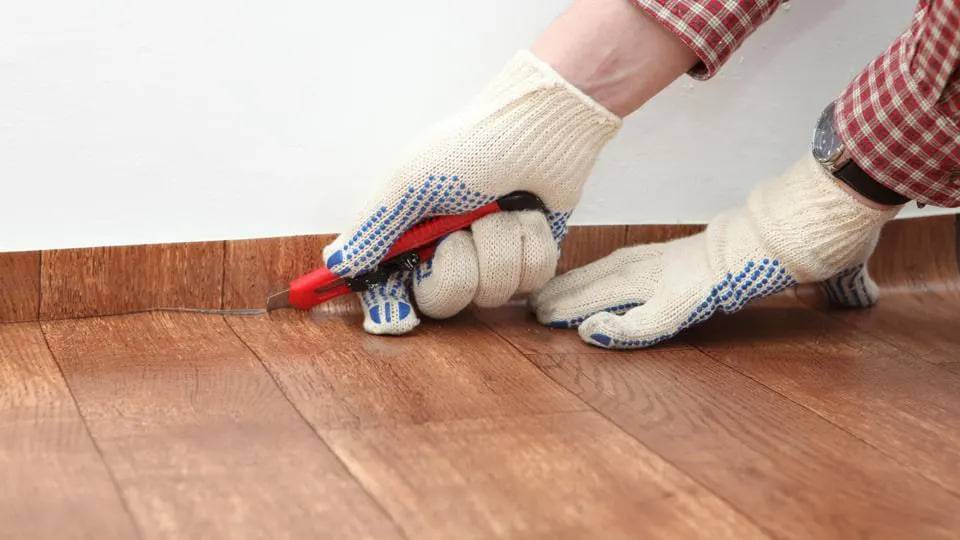Vinyl and linoleum are popular flooring options, often confused due to their similarities. However, despite being resilient materials, they have key differences. This guide will break down their characteristics to help you decide which one is right for your needs.
Get a free quote for your vinyl or linoleum flooring project today! Dex Flooring’s experienced team can help you choose the right material, measure your space, and provide a hassle-free installation. Visit Dex Flooring Website: Dex Flooring Website or call us at +61 483 224 831 to learn more.
Linoleum vs. Vinyl Flooring: A Tale of Two Materials
Linoleum: The Original Green Warrior
Linoleum, the veteran of resilient flooring, boasts a history of over 160 years. It all started with an observation: linseed oil, used as a paint thinner, formed a tough, flexible film. This led to experimentation, blending the oil with natural materials like cork dust and wood flour to create durable flooring. Linoleum’s key strength lies in its entirely natural composition.
For a century (late 1800s to 1950s), linoleum reigned supreme in kitchens and utility areas. It’s a solid material throughout, with a unique wear pattern due to the absence of a printed design layer.
Vinyl: The Synthetic Newcomer
The 1920s saw the arrival of vinyl, a completely synthetic material made primarily of PVC (polyvinyl chloride). In the 1960s, its lower cost propelled it as a popular replacement for linoleum. Vinyl flooring features a PVC core on a backing, topped with a wear layer and a photographic design layer.
Environmental Impact: A Stark Contrast
Vinyl’s production raises concerns for eco-conscious consumers. It’s a cocktail of potentially harmful chemicals, including PVC and phthalate plasticizers, some classified as carcinogens. Additionally, its manufacturing requires significant energy and petroleum, and disposal is a challenge.
These factors have led to a resurgence of linoleum as a safer, more environmentally friendly alternative. Once considered old-fashioned, linoleum is back in vogue, offering a sustainable choice for modern spaces.
Here is a comparison of linoleum and vinyl flooring in a table format:
Vinyl vs. Linoleum Flooring: A Side-by-Side Comparison
| Feature | Vinyl Flooring | Linoleum Flooring |
| Look and Feel | Wide variety of colors, patterns, and images; vibrant and realistic; design layer can wear through | Limited design options; color and pattern inherent throughout; ages gracefully |
| Water Resistance | Modern vinyl is waterproof; older types susceptible to water damage; sheet vinyl better than tiles | Water-resistant but needs sealing; vulnerable to flooding and high humidity |
| Heat Resistance | Poor heat resistance; melts from hot objects; releases harmful fumes in fire | Good heat resistance; doesn’t melt easily; safer in fires |
| Care and Cleaning | Easy to clean; regular sweeping, vacuuming, and mopping | Easy to clean; regular sweeping/vacuuming; requires specific cleaning solutions |
| Durability and Upkeep | Design layer can wear through; modern vinyl has tough wear layer; no waxing/sealing | Very durable; requires periodic sealing for water resistance; more susceptible to scratches |
| Installation Ease | Sheet vinyl: difficult DIY; tiles: easier DIY (glue-down or peel-and-stick) | Sheet linoleum: professional recommended; tiles/planks: easier DIY (click-lock) |
| Resale Value | Doesn’t add significant value | Eco-conscious appeal to some buyers |
| Comfort and Sound | Somewhat cold and hard; slightly quieter than ceramic tile/laminate | More comfortable and quieter; feels like a yoga mat vs. a thin rug |
| Environmental Impact | Toxic chemicals in production; not recyclable | Made from natural materials; biodegradable; lasts longer |
| Lifespan | 10-20 years; maintains gloss until wear layer breaks | 20-40+ years; develops a patina with ageb |
Look and Feel: Striking a Balance
Vinyl Flooring
Vinyl flooring boasts an impressive array of colors, patterns, and even images thanks to its printed design layer. This opens doors to vibrant and incredibly realistic effects, mimicking wood grain, stone, or even custom designs. It’s a feast for the eyes! However, the beauty is somewhat skin-deep. The design layer sits beneath a wear layer, and both can wear down over time, revealing the core material and creating unsightly, worn spots.
Linoleum Flooring
Linoleum takes a different approach. This natural material is dyed throughout its thickness, so the color and pattern are inherent, not merely printed. This limits design options compared to vinyl, but it offers a distinct advantage: resilience. As linoleum ages, it gracefully weathers and fades slightly, but the overall design remains intact. Unlike vinyl, you won’t find worn patches exposing a different layer. Think of it as a classic that matures beautifully.
Water and Heat Resistance
Vinyl Flooring
Modern vinyl shines when it comes to water resistance. The key lies in its backing. Older felt backings were susceptible to water damage, but newer fiberglass backings are completely waterproof. Vinyl sheets boast an extra advantage – fewer seams compared to tiles, minimizing water intrusion points. This makes vinyl a great choice for moisture-prone areas like basements.
Linoleum Flooring
While linoleum offers water resistance, it’s not invincible. Regular sealing is crucial to maintain its protection against liquids. Flooding can be disastrous, and high humidity might cause curling at the edges or corners.
Heat Resistance: The Linoleum Advantage
When it comes to heat, linoleum takes the crown. Unlike vinyl, which melts easily from hot objects, linoleum offers better resistance. Additionally, linoleum doesn’t readily burn or release harmful fumes during a fire, a safety advantage over vinyl.
Care and Cleaning
Vinyl Flooring
Vinyl flooring is a champion of low-maintenance living. Regular sweeping and vacuuming keep it dust-free. Mopping with various detergents is a breeze – vinyl resists discoloration and won’t succumb to moisture, mold, or mildew growth. A simple wipe-down every now and then keeps it looking its best.
Linoleum Flooring
Linoleum is nearly on par with vinyl in terms of cleaning ease. Sweeping or vacuuming regularly is all it takes for basic maintenance. Stains can be tackled with a damp cloth and a mild detergent. However, unlike vinyl, linoleum requires a bit more attention to detail. Manufacturers recommend using cleaning solutions specifically formulated for linoleum. Off-the-shelf detergents might have high pH levels that can damage the surface over time. So, a quick trip to the store for the proper cleaning product might be necessary.
Durability and Upkeep
Vinyl Flooring: A Trade-Off Between Style and Longevity
Vinyl’s construction, with a design layer on top of a solid PVC core, presents a potential downside. Over time, the design layer can wear thin, revealing the core and creating an unsightly appearance. However, modern vinyl boasts a tough wear layer, eliminating the need for waxing or sealing – a plus for busy households.
Linoleum Flooring: Built to Last, But Needs TLC
Linoleum reigns supreme in terms of inherent durability thanks to its solid construction throughout. Both materials are relatively easy to maintain, but linoleum requires periodic sealing to maintain its water and stain resistance. This extra step might be a minor inconvenience for some. Additionally, linoleum’s softer nature makes it more susceptible to scratches and gouges. However, the solid color means minor imperfections are less noticeable compared to vinyl, which might reveal the core layer underneath.
Installation Ease
Vinyl Flooring: Glue-Down or DIY Delight
Vinyl offers two installation options: sheet vinyl and vinyl tiles. Sheet vinyl installation, typically involving full adhesive application, can be tricky for DIYers. Cutting large sheets precisely and joining seams requires skill. Given the affordability of professional installation, many opt for this route.
Vinyl tiles, on the other hand, are DIY-friendly favorites. They can be either fully glued down or take advantage of the peel-and-stick technology. With pre-applied adhesive on the tiles, simply remove the backing paper for a quick and easy installation process.
Linoleum Flooring: Professional Touch or Click-Lock Convenience
Linoleum installation shares similarities with vinyl. However, sheet linoleum is even more challenging to work with than sheet vinyl, and professional installation is almost always recommended. While cutting sheets might require a sharper linoleum knife compared to vinyl, the adhesive and seam welding process are best left to experts.
The good news: linoleum also comes in DIY-friendly tiles and planks. These often utilize a click-lock joining system, similar to luxury vinyl or laminate planks. This method allows the tiles or planks to “float” over the subfloor without adhesives, simplifying the installation process.
Resale Value
Vinyl Flooring: A Budget-Friendly Choice
Vinyl flooring is generally considered an economical option. While it offers a variety of styles, it typically doesn’t add significant value to a home.
Linoleum Flooring: Eco-Conscious Appeal
Many potential buyers might not readily distinguish between vinyl and linoleum. However, linoleum’s design options might be seen as slightly less diverse. On the flip side, its natural and eco-friendly nature can be a selling point for environmentally conscious buyers. Highlighting this advantage during home tours could be beneficial.
Comfort and Sound
Vinyl Flooring: A Balancing Act
Vinyl offers a balance between practicality and comfort. While its resilient nature can prevent some dish-dropping disasters, it can feel cold and hard, especially on concrete subfloors. On the noise front, vinyl offers a slight improvement over hard surfaces like ceramic tile or laminate.
Linoleum Flooring: A Softer Touch
Linoleum takes the crown for comfort and sound. Its slightly softer nature provides a more cushioned feel underfoot and dampens noise better than vinyl flooring. Imagine the difference between walking on a yoga mat versus a thin throw rug – that’s the subtle advantage linoleum offers.
Environmental Impact
Vinyl Flooring: A Footprint of Concern
Vinyl flooring boasts a dark secret: it’s one of the most inherently toxic building materials. While the production chemicals are generally stable in the final product, fires can release them, and there’s no viable recycling option for old vinyl. These materials languish in landfills for centuries, with incineration not being an environmentally friendly solution.
Linoleum Flooring: A Sustainable Choice
Linoleum is the polar opposite of vinyl when it comes to environmental impact. Its hero ingredient? Plant-based linseed oil, blended with other natural materials. Unlike vinyl’s potential 10-year lifespan, linoleum can grace your floors for a remarkable 40 years. And when the time comes for replacement, you can rest easy knowing the components biodegrade harmlessly.
Lifespan
Vinyl Flooring: A Flash in the Pan
Vinyl flooring’s affordability comes with a lifespan caveat. While it costs less upfront compared to linoleum, expect to replace it every 10 to 20 years. One advantage is that vinyl maintains its glossy look until the wear layer suddenly gives way, revealing the core underneath.
Linoleum Flooring: The Marathon Runner
Linoleum reigns supreme in terms of durability. It boasts a lifespan of 20 to 40 years or even longer! The trade-off? Linoleum will visibly age over time, developing a weathered patina that some find charming and others might find undesirable.
Conclusion
Choosing between vinyl and linoleum flooring depends on your priorities. Vinyl offers a dazzling array of designs, affordability, and ease of installation (especially with tiles). However, its lifespan is shorter, and it raises environmental concerns. Linoleum boasts superior durability, eco-friendliness, and a timeless aesthetic that matures gracefully. While its design options are more limited, and some might find upkeep a touch more involved, it provides a comfortable and quiet walking surface. Ultimately, weigh the factors that matter most to you to find the perfect fit for your home.





